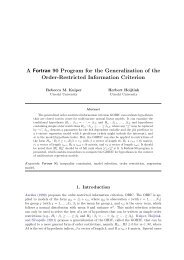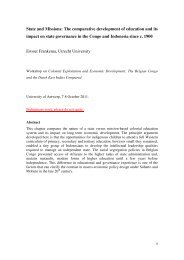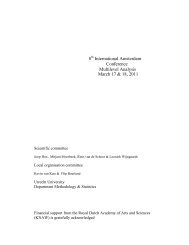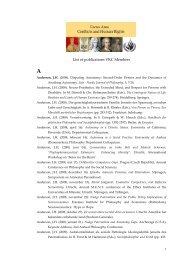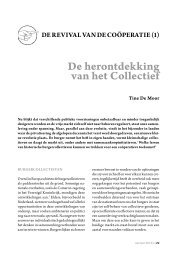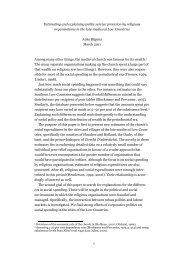New Approaches to Medieval Communication?1
New Approaches to Medieval Communication?1
New Approaches to Medieval Communication?1
You also want an ePaper? Increase the reach of your titles
YUMPU automatically turns print PDFs into web optimized ePapers that Google loves.
<strong>New</strong> <strong>Approaches</strong> <strong>to</strong> <strong>Medieval</strong> <strong>Communication</strong>?19interested in the message as such. Nor did he devote attention <strong>to</strong> the process ofcommunication in which the ‘destination’, the person for whom the informationis intended, answers a message and thus becomes a ‘source’, while theoriginal ‘source’ becomes the ‘destination’ of the answer. Many have tinkeredwith Shannon’s elegant model in order <strong>to</strong> address its limitations. In the “processmodel of communication” of Oomkes, <strong>to</strong> take a random example, attentionis paid <strong>to</strong> the contents of messages and the interaction which takes placewhen two human beings communicate. 16 He defines communication as follows:<strong>Communication</strong> is the exchange of symbolic information which takes place betweenhuman beings who are conscious of one another’s immediate or mediatedpresence. This information is given, received and interpreted partially consciously,partly unconsciously. 17This definition, <strong>to</strong>o, does not seem <strong>to</strong> be wholly adequate. Although weobtain much information from the unconscious behaviour of the people wemeet, such signals are quite different from consciously encoded messages. Thesender must be conscious that he is providing information before we can speakof communication. An example may explain this. In the Early Middle Ages itwas possible <strong>to</strong> indicate social status by hair-dress. The long hair of theMerovingian kings signified their royal blood. Those whom one wanted <strong>to</strong>exclude from royal succession were shorn. Hair-dress could therefore be usedas a ‘medium’ for the transmission of messages. When king Chilperic I wasmurdered at Chelles under mysterious circumstances, his body was recognizedby its copious shock of hair. 18 However, Chilperic was no longer conscious ofthe message he sent: he no longer had the possibility not <strong>to</strong> send this signal, forinstance by covering up his long hair. A dead man does not himself ‘communicate’.In the study of medieval communication the exchange of consciouslyencoded messages is privileged.The Forms of <strong>Medieval</strong> <strong>Communication</strong>Any attempt <strong>to</strong> reduce the fullness of medieval communicative behaviour<strong>to</strong> a rigid scheme risks <strong>to</strong> be both banal and soporific. Such a scheme has <strong>to</strong>16 No. 26 (OOMKES, 1986), p. 32.17No. 26 (OOMKES, 1986), p. 44.18 J.M. WALLACE-HADRILL, The Long-Haired Kings and other Studies in Frankish His<strong>to</strong>ry(London, 1962), pp. 148-248, esp. pp. 156-158, 162, 232, 245.




